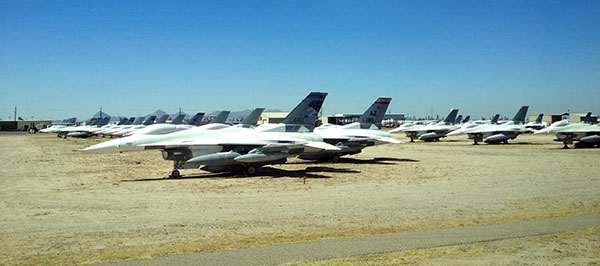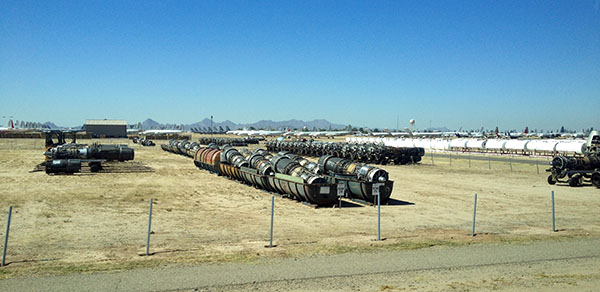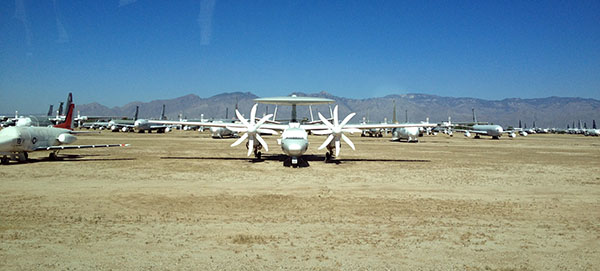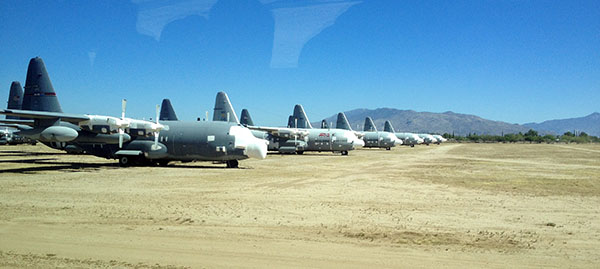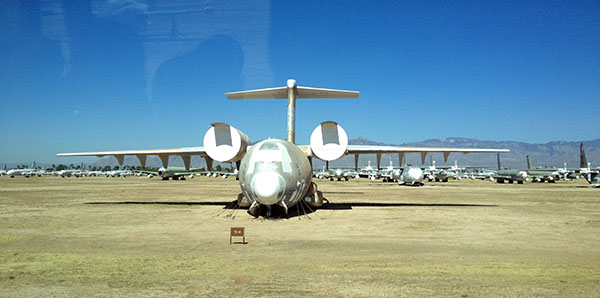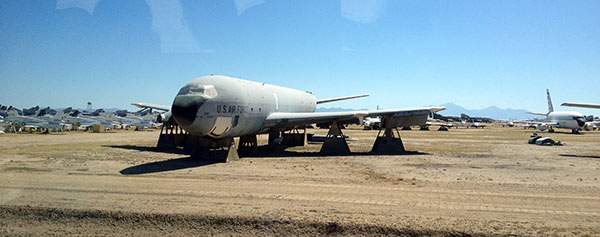Our tour of the “Boneyard” — the colloquial name for the 309th Aerospace Maintenance and Regeneration Group in Tucson — provided a thorough overview of the history of military aviation and the techniques employed to extend the age of the nation’s fleet.
In addition to preserving (and scrapping) aircraft for the various branches of the U.S. military, this facility also provides services for allies willing to pay a fee. There are generally four categories of aircraft here:
- Those that must be kept near read-to-fly condition, with minimal mothballing so they can be recalled quickly to active service.
- Those that are in long-term storage but may be eventually re-used.
- Those that are scavenged for parts.
- Those that are preserved in “static” condition for purposes like museum displays, with the rest recycled as scrap metal.
Our guide explained that AMARG is such a valuable source of replacement parts that at one point they dismantled several fighter jets also used by Iran, making the facility less attractive to thieves. In other cases they are responsible for decommissioning aircraft that were part of America’s nuclear defense force. Broken up B-52Bs are laid out and organized so Russian spy satellites can monitor progress. Some other aircraft are stored under hangars to ensure they aren’t spotted by those same satellites.
AMARG’s location in the desert wasn’t motivated just by dry weather, which reduces corrosion. It also helps that the earth just underneath the topsoil is very dense and stable, which means that the ground underneath planes won’t sink. No asphalt or concrete is needed even when it rains.
The result is that many planes stored at AMARG will fly again, and those that don’t can still be salvaged for spare parts to extend the life of other planes. In some cases AMARG even stores brand new planes when funds aren’t available for their operation.
To reduce the effect of the intense desert sun, cockpit windows, jet engines, and other sensitive parts are covered with a white spray-on laminate. Otherwise internal temperatures could reach 200 degrees Fahrenheit. You can see that in some cases engines might also be put inside drums or other containers, though this isn’t possible for the largest models.
There are two highlights to the tour. First is Celebrity Road, which has one of every aircraft located at AMARG. You can see popular models like the F-16 fighter jet, a few variations of the C-130 cargo plane (including one with skids for landing at places like Antarctica’s McMurdo Station), and the Pacific Commander’s personal transport.


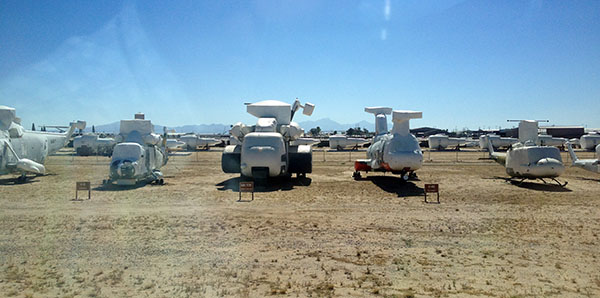
The facility also has a sense of humor. Witness the F-117 stealth fighter.
I was more interested in the other highlight, where they disassemble older planes or those no longer wanted. Some of these, like the B-52 Stratofortress, are among the largest planes I’ve ever seen. I mentioned earlier that AMARG had destroyed 365 B-52Bs to comply with the Strategic Arms Reduction Treaty. Others are test planes like the second one below (with an unusually large nose) are being phased out. It was used to test a laser array weapon rather than traditional missiles, but the program was discontinued.
Although we saw only a few commercial aircraft at AMARG, that wasn’t an issue. We’d soon get an up-close and personal look at several of United’s jets at its SFO Maintenance Operations Center that evening.



